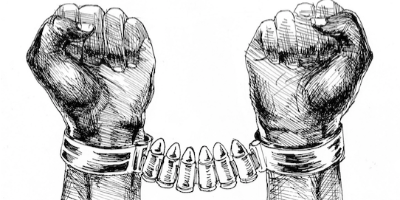21 sept. 1982 - HIV/AIDS is introduced to the Public
Description:
The AIDS epidemic, caused by HIV (Human Immunodeficiency Virus), found its way to the United States as early as 1960, but was first noticed after doctors discovered clusters of Kaposi's sarcoma and pneumocystis pneumonia in young gay men in Los Angeles, New York City, and San Francisco in 1981.By the end of 1981, there is a cumulative total of 337 reported cases of individuals with severe immune deficiency in the United States—321 adults/adolescents and 16 children under age 13. Of those cases, 130 are already dead by December 31.
AIDS activist groups and organizations began to emerge in the 80's and advocate for people infected with HIV in the United States. Though it was an important aspect of the movement, activism went beyond the pursuit of funding for AIDS research. Groups acted to educate and raise awareness of the disease and its effects on different populations, even those thought to be at low-risk of contracting HIV. This was done through publications and “alternative media” created by those living with or close to the disease.
Activist groups worked to prevent spread of HIV by distributing information about safe sex. They also existed to support people living with HIV/AIDS, offering therapy, support groups, and hospice care. Organizations like Gay Men's Health Crisis, the Lesbian AIDS Project, and SisterLove were created to address the needs of certain populations living with HIV/AIDS. Other groups, like the NAMES Project, emerged as a way of memorializing those who had passed, refusing to let them be forgotten by the historical narrative. One group, the Association for Drug Abuse Prevention and Treatment (ADAPT), headed by Yolanda Serrano, coordinated with their local prison, Riker's Island Correctional Facility, to advocate for those imprisoned and AIDS positive to be released early, so that they could pass away in the comfort of their own homes.
In October 30, 2009 President Barack Obama reauthorized the Ryan White HIV/AIDS Bill which expanded care and treatment through federal funding to nearly half a million. He also announced that the Department of Health and Human Services crafted regulation that would end the HIV Travel and Immigration Ban effective in January 2010; on January 4, 2010, the United States Department of Health and Human Services, Centers for Disease Control and Prevention removed HIV infection from the list of "communicable diseases of public health significance," due to it not being spread by casual contact, or by air, food or water, and removed HIV status as a factor to be considered in the granting of travel visas, disallowing HIV status from among the diseases that could prevent people who are not U.S. citizens from entering the country.
Ajouté au bande de temps:
Date:
21 sept. 1982
Maintenaint
~ Il y a 43 ans
